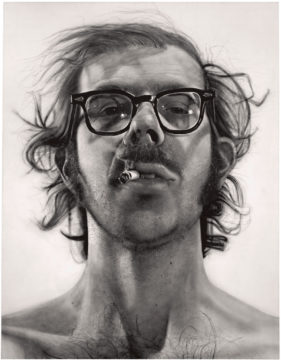Ken Johnson and at The New York Times:
 Mr. Close did not like to think of himself as a realist, photo or otherwise. In many ways he was closer to a conceptualist like Sol LeWitt, whose sculptures and murals were made according to preconceived rules and instructions. Tension between opposites like realism and abstraction, surface and depth, reality and illusion remained central to Mr. Close’s art throughout his career.
Mr. Close did not like to think of himself as a realist, photo or otherwise. In many ways he was closer to a conceptualist like Sol LeWitt, whose sculptures and murals were made according to preconceived rules and instructions. Tension between opposites like realism and abstraction, surface and depth, reality and illusion remained central to Mr. Close’s art throughout his career.
Increasingly, his paintings, drawings and prints emphasized the systems, processes and materials by which they were conceived and made. In the 1970s, he began to translate his photographic sources into pixelated images, filling in the individual cells of a grid with distinct marks, colors and tones that would cohere into photographic images when viewed from a distance. Using techniques and materials as various as watercolor, pastel, etching, handmade paper pulp and his own fingerprints, he continued to explore the dialogue between the physical facts and the photographic illusion.
more here.
